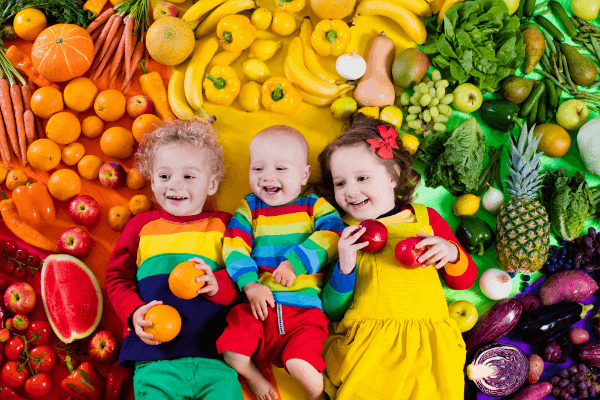How to Get Your Child to Eat More Vegetables
Some children are born with the natural love of vegetables while other children despise these healthy food options. As your children grow older they start to develop a sense of independence with their preferred likes and dislikes. This often comes in the form of having a child who refuses to eat vegetables.
Many parents struggle with their child’s newfound dislike of vegetables because they know consuming vegetables are part of maintaining a nutritious diet. Vegetables are packed full of nutrients and vitamins that your growing child needs.
So, what happens when your child refuses to eat vegetables? That’s where creativity comes into play. You’ll need to use our tips below to become cleverer with your approach to getting your child to eat more vegetables.
Replace Favorite Options with Cauliflower
The most popular option to get your child to eat more vegetables is cauliflower. This healthy vegetable doesn’t have much flavor and is easily used to replace rice, pasta, and pizza crust! You can find cauliflower pasta, cauliflower rice, and cauliflower pizza crust recipes online or purchase most of these options in the health food section of your grocery store.
Mix Vegetables Into Favorite Meals
There are many ways to mix vegetables into your child’s favorite meals. Macaroni and cheese blend well with broccoli. Scrambled eggs blend well with chopped spinach. Chicken noodle soup tastes delightful with small chunks of celery added. These are just a few of the options that allow you to mix vegetables into your child’s favorite meals. They’ll barely notice this additional ingredient in their favorite meals.
Switch up the Presentation
Have you heard of ants on a log? This famous vegetable treat is easy to create. You take a stalk of celery, cut it down to a child’s size stalk, spread peanut butter inside the crevice of the celery stock, place a few raisins on top and you have ants on a log! Make your vegetable options look like something fun that interests your child so that they’re more apt to have fun eating their vegetables. This will distract your child so they’re not even thinking about the snack as a vegetable, but rather an adorable artwork piece that they can eat.
Get Them Involved
When children are involved with the shopping, preparation, and presentation of meals they tend to enjoy eating the dish. When it comes to vegetables, you can get your children involved by having them grow a vegetable. Let your child pick a vegetable to grow and let them tend to their plant until it’s time to harvest their crop. You’ll find this encourages your child’s love of vegetables while teaching them an important life skill.
Keep Trying
No matter how many times you try to get your child to eat more vegetables, there will be times when they simply flat out refuse to try anything new. Taste buds and preferences will change over time. You’ll need to keep trying to introduce new vegetables and different presentation options to your child until they finally start consuming vegetables regularly.
The day will come when you realize that your child is eating vegetables without a fuss and that day will feel like the best day ever! Remember that it’s a normal part of development when your child starts refusing to eat certain foods. You can embrace this newfound defiance by creating a new experience with vegetables so that your child learns to enjoy eating vegetables without an argument.
Is your toddler a picky eater? Learn more about healthy and nutrition tips for infants and toddlers and other helpful parenting tips on our Peake Academy: Parent Advisor and Play Boutique: The Buzz blogs. You can also join our Parent Advisor private Facebook group to share and get tips from our growing family of parents and preschool teachers.
Thank you for reading this blog!
This infographic highlights the behavioral milestones of children from age s 2 to 5 years old, healthy tips for picky eaters, a chart of mealtime and feeding tips for toddlers to make sure they get the nutrients he or she needs for growth and development.
Get the Free and Full Version when you sign up to our Weekly Newsletter
We promise not to overflow your Inbox










